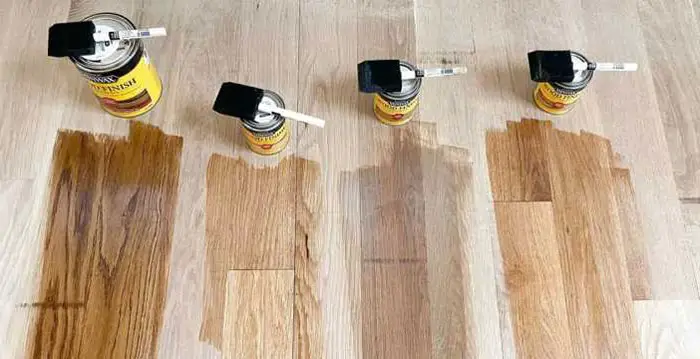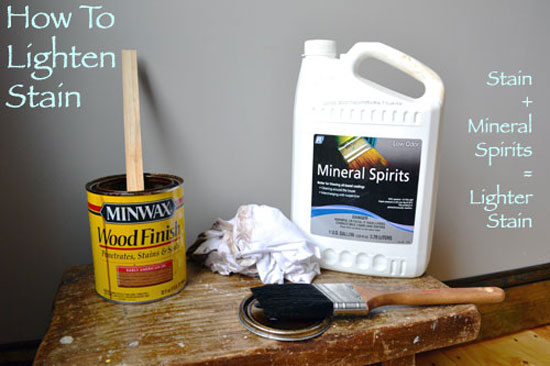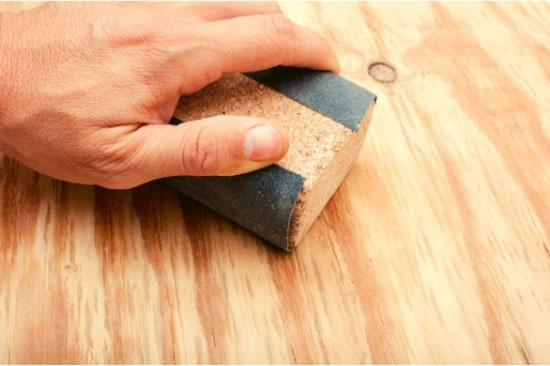Does Wood Stain Lighten As It Dries? Yes, But Factors Affect!
Among the advantages of using wood stains is to prevent wood from water and UV ray damage and enhance its natural colors. However, sometimes, the tone may appear darker than expected, which makes one wonder if the stain will lighten when it dries.
So, does wood stain lighten as it dries? Wood stain does lighten as it dries, but various factors affect the possibility. The wood stain will lighten if you use a water-based option, apply only a few coats, and use a glossy topcoat. You can also sand, use vinegar or bleach to lighten the final piece if too dark.
The article discusses more about wood stain lightening as it dries. Read on to learn how this happens and the factors that will determine the possibility of the final piece lighting.
How Does Wood Stain Dry?
Before you learn more about whether the wood stain will lighten as it dries, it’s necessary to understand the drying process. The wood stain typically dries through evaporation and absorption.

The solvents and thinners in the stain start evaporating when exposed to air shortly after application. The solvents and thinner are added to help improve spreading during application and penetration.
As they evaporate and the stain dries, the pigments and resins remain. The two are responsible for the stain’s color and protective properties. Each layer applied must be completely dry before the next one is applied.
Wood Stains Look Too Dark: Will It Lighten as It Dries?
Besides preventing water and UV ray damage on wood, a crucial aim of applying wood stain is to enhance the natural colors. However, for various reasons, the wood stain may appear too dark after application.

Luckily, during the drying process, wood stain lightens, especially if it is water-based. As the solvent and thinners evaporate, the pigments and resins left behind cause the wood to lighten.
If the stain doesn’t seem to lighten as it dries, there are ways to lighten the wood stain. One of the ways is to use a water-based polyurethane as a top coat. In most cases, wood stain appears dull when applying the undercoats and brightens when the topcoat is added.
Factors That Determine Whether Wood Stain Lightens as It Dries?

The following list are factors that influence the possibility of a wood stain lightening as it dries.
1. Solvent or Carrier Type
The type of solvent or carrier used in the wood stain’s formulation is among the crucial determining factors. Oil-based wood stains use petroleum-based solvents and mineral spirits as the carriers.
Oil-based wood stains usually darken the wood as it dries and cures. These types penetrate deeper into the wood and provide rich and deep color to the wood.
Water-based wood stains use water as a primary carrier. These types are best known for their quick drying time and lightness as they dry. So, if you’re using this type, expect the stain to lighten.
2. Wood Type and Age
The wood type and age also determine whether the wood stain will lighten or darken as it dries. Some types of wood, like oak, absorb the stain more, which results in a darker appearance.
Less absorbent wood, like maple, allows much wood stain to evaporate, resulting in lighter colors. Also, freshly cut wood is more absorbent and forms a darker shade than older ones.
3. Number of Coats
The number of wood stains you apply on the wood also determines whether the surface will lighten as it dries. Generally, experts advise you to add as much wood stain as the wood can absorb. However, usually, two coats are enough.
More coats will result in a darker color as more wood stain sinks into the wood. Also, more layers hinder the colors, resulting in a darker shade. For a lighter result, use fewer coats.

4. Top Coat
The top coat used on the wood stain is also a determining factor in the final color. Top coats provide the final layer with protection and enhance its color.
Top coats with a high gloss level reflect more light, making the wood stain appear lighter. Also, clear and transparent top coats are more likely to lighten the wood color compared to the opaque options.
5. Wipe-off Techniques
The techniques used to apply the wood stain affect the final color. One of the influential techniques is a wipe-off technique, which involves applying it while wiping off the excess wood stain.
The technique aims to produce even and clear results that expose the wood grain. The excess wood stain should be wiped off on time to avoid inconsistencies, which can result in a darker shade.
The time to allow the stain to sit is usually described on the stain instructions but is usually five minutes. After this time, use a clean rag and wipe off the excess stain. Wipe gently not to remove all the stain or create lumps.
How Do I Lighten a Wood Stain That Appears Too Dark?
As mentioned earlier, there are ways you can lighten wood stains that appear too dark. Following are the various methods to lighten the wood stains.
1. Sanding
One of the methods includes sanding the wood surface to remove a thin layer on the topcoat. Use fine-grit sandpaper to sand slightly on the surface along the wood grain, then wipe. Repeat the process until the surface achieves the desired lightness.

2. Use a Water-Based Topcoat
As stated earlier, a water-based topcoat, especially polyurethane, lightens the wood surfaces. Use a water-based top coat when the wood stains appear too dark during applications. Water-based topcoats are known to be highly reflective and can make the wood surface appear brighter.
3. Use Vinegar
Another method to lighten a wood stain that appears too dark is to apply vinegar. The acetic acid in the bleach dissolves the pigments in the stain, lightening the color. However, vinegar may not work on all types of wood and the wood stain used.
4. Bleach
Wood or home bleach can also lighten wood stains that are too dark. The sodium hypochlorite in the bleach breaks down the compounds responsible for the wood stain as it undergoes an oxidation reaction. Like vinegar, the wood and stain type will determine the success of the process.
Watch the video below to learn how to lighten dark stains
FAQs
When learning about this topic, there are various questions that you might ask yourself. The following section covers some of these questions and their answers.
Q1. After How Long Will The Stain Take To Lighten?
The time the stain takes to lighten will be determined by how long it takes to dry. Water-based wood stains dry faster and will dry within six hours, while oil-based wood stains take up to 24 hours. When the wood stain dries, it will lighten.
Q2. Does Thinning the Stain with Water Help Lighten The Final Appearance?
Thinning the stain with water helps lighten the wood stain on the wood. Thinning involves using water alongside the wood stain to improve control during application and brighten the surface.
Q3. How Long Does The Wood Stain Retain The Color After Drying?
In most cases, the wood stain can retain the color for up to five years. The type of solvent on the wood stain, whether water-based or oil-based, affects the amount of time. However, it’s best to re-stain the surface after two years to maintain the luster.
Final Words
To conclude, the wood stain is more likely to lighten as it dries, especially if it’s water-based. However, you can improve the final results by thinning the wood stain when applying. Ensure you didn’t miss the factors discussed earlier to learn the possibility of the stain brightening.
Also, remember not to panic during application if you haven’t applied the top coat yet. The final piece usually lightens once the top coat is added, especially if it is water-based. Besides, It’s best to test the wood stain on another piece of wood to avoid damaging the whole project.




